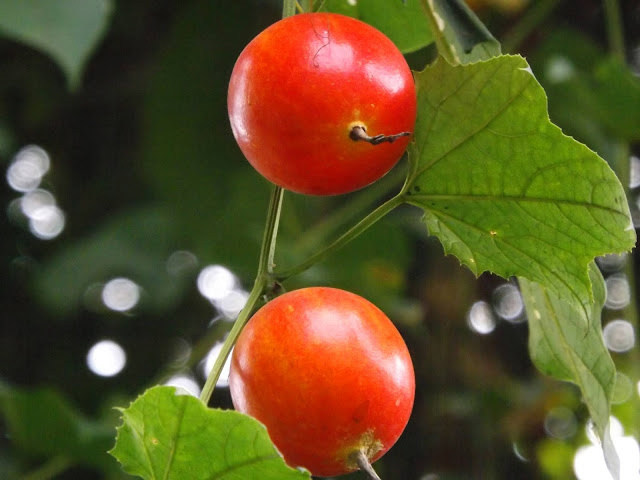Tulsi or Sacred basil, Ocimum tenuiflorum
Tulsi or Sacred basil (Ocimum tenuiflorum, family: Lamiaceae) is an odorous perennial herb or undershrub with many branches attaining a height of 1-1.5 m. Almost whole body of the plant is covered with hairs. Stem is woody, furrowed and quadrangular. Like many other herbs (Dhutra, Begun, Pepper) the plant can be purple. It is found everywhere in Bangladesh as a medicinal as well as sacred plant to Hindu community. It has spread across a huge global range, extending from the Arabian Peninsula to East Asia as well as Pacific Islands to Australia.
Other names: Kalo tulsi (Bang); Tulasi, Ajaka (Sans); Holy basil (Eng).
Leaves are strongly scented, green or purple, hairy, ovate-broadly elliptical, 2-5 cm long and 1-1.5 cm wide, opposite, irregularly dented, petiole 2-3 cm long.
Fruit is nut, almost round, brown or reddish. Flowers and fruits can be seen on the same plant at the same time. It is propagated by seeds and cuttings.
The plant is used in the treatment of chicken pox, hysteria, rheumatic arthritis, bronchitis, gastritis, itching, influenza, insanity, measles, tuberculosis etc. Leaves are used in cough, cold, stomach disorder, liver diseases, skin diseases and depression. Juice of leaves are often used with honey to make dose for children. Its drink made from leaves is gradually gaining popularity in the country as Tulsi-tea. Raw leaves are also used as salad. It is used somewhere as mosquito repellent. Needless to say, no medicinal garden can be imagined without this plant. In ancient Indian medical scriptures it is referred to as 'the incomparable one'.
Synonyms: Geniosporum tenuiflorum, Lumnitzera tenuiflora, Moschosma tenuiflorum, Ocimum anisodorum, Ocimum caryophyllinum, Ocimum hirsutum, Ocimum inodorum, Ocimum monachorum, Ocimum sanctum, Ocimum sanctum var. angustifolium, Ocimum sanctum var. cubensis, Ocimum sanctum var. hirsutum, Ocimum scutellarioides, Ocimum subserratum, Ocimum tenuiflorum var. anisodorum, Ocimum tenuiflorum f. villicaulis, Ocimum tomentosum, Ocimum villosum, Plectranthus monachorum.








Comments
Post a Comment